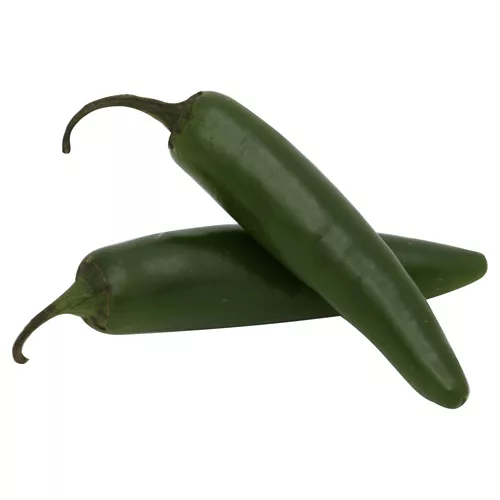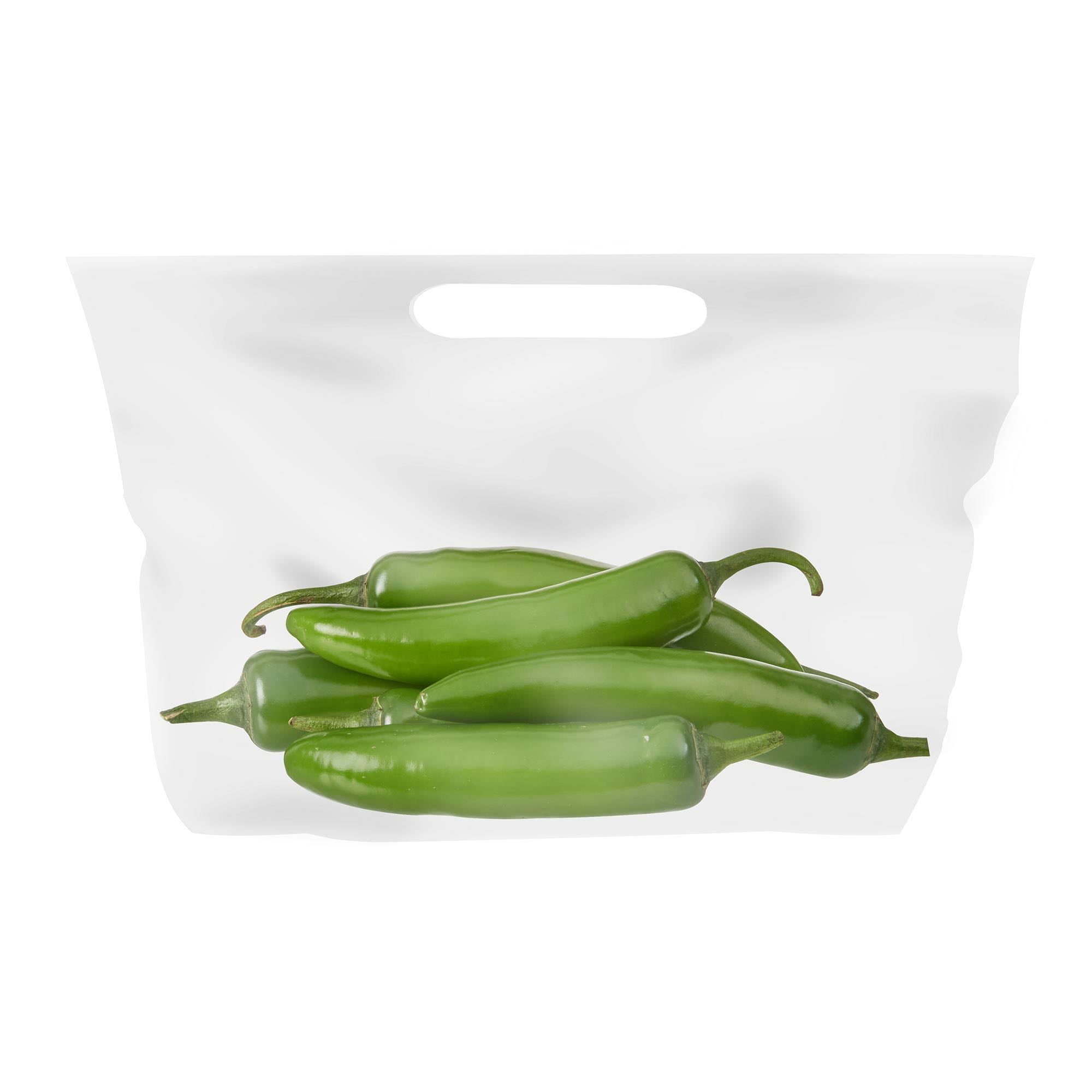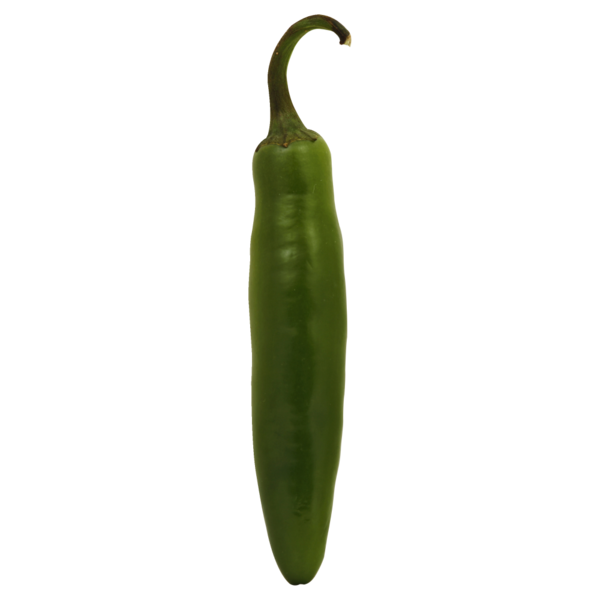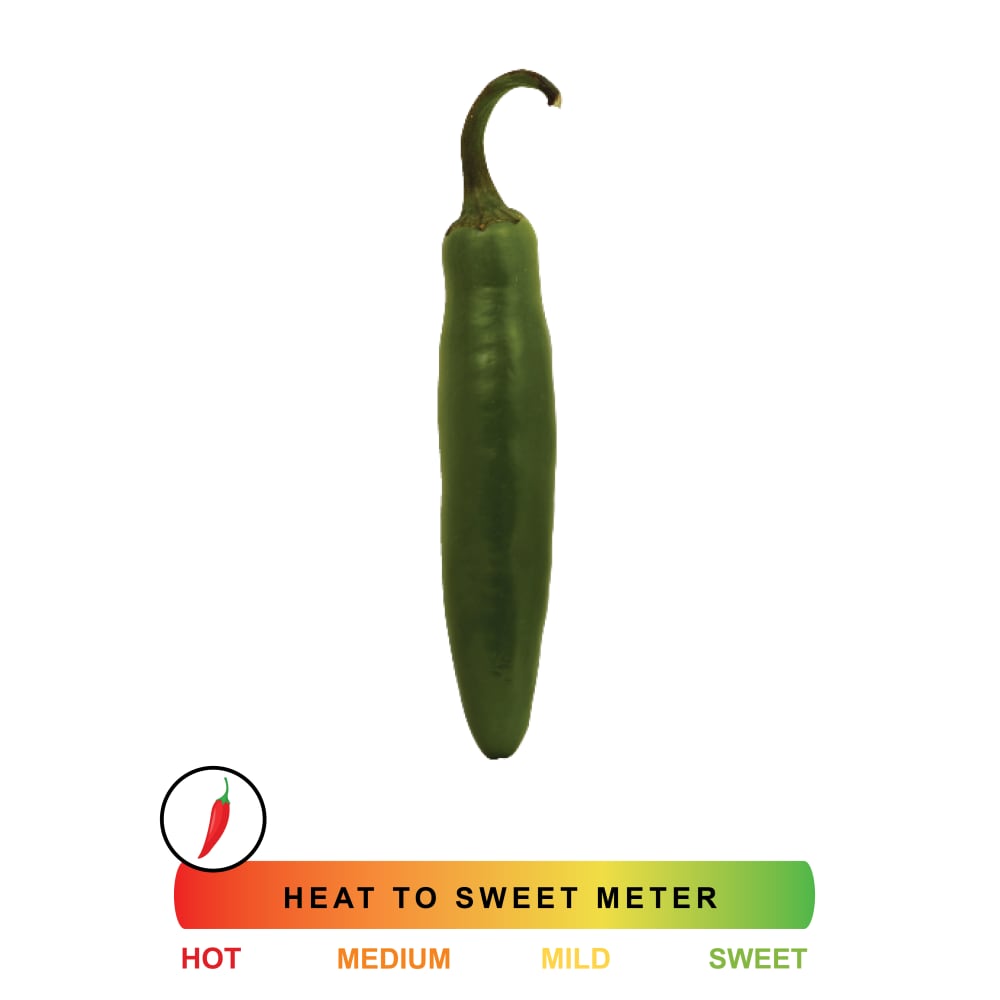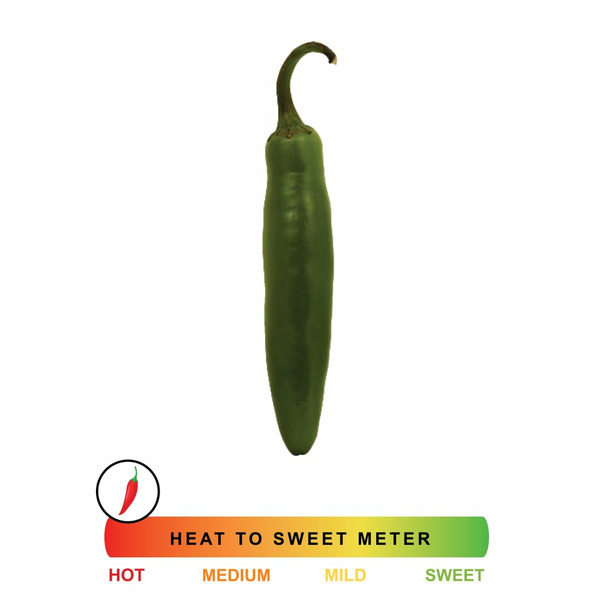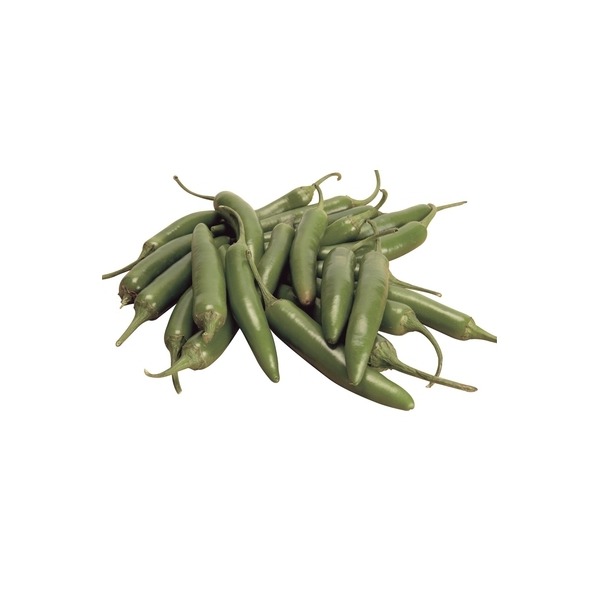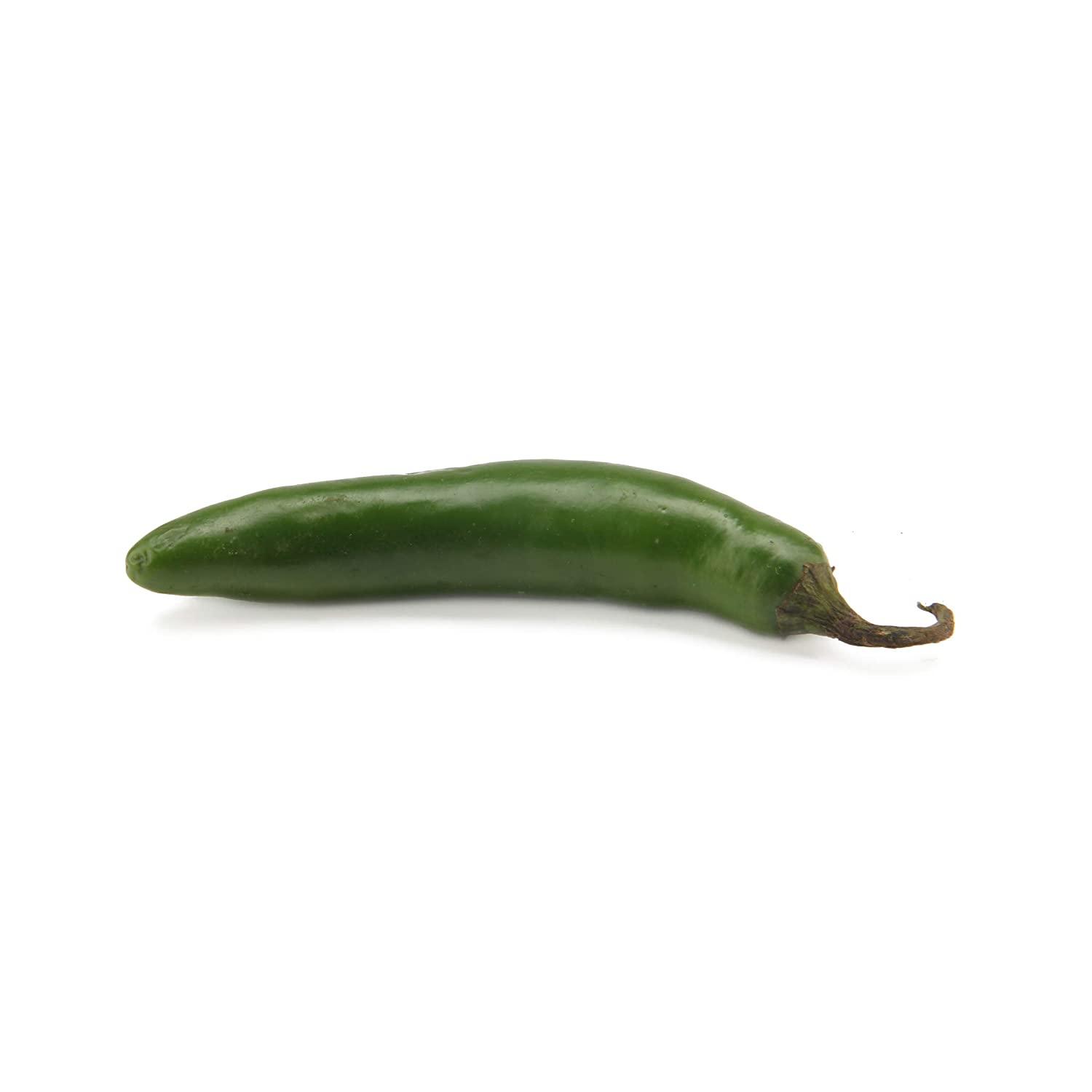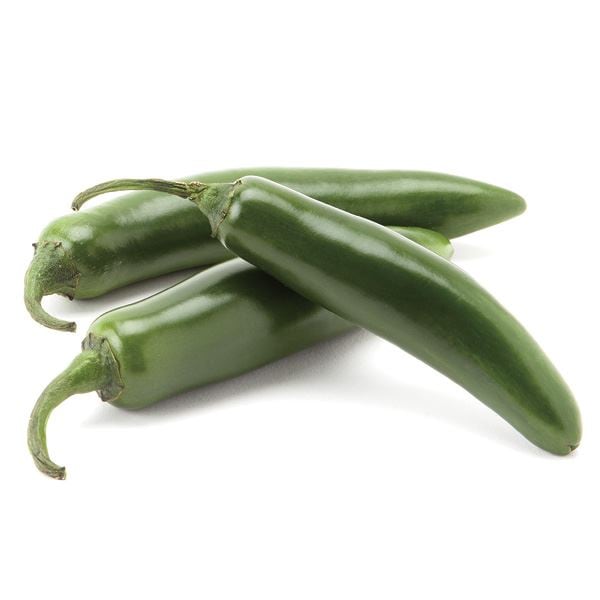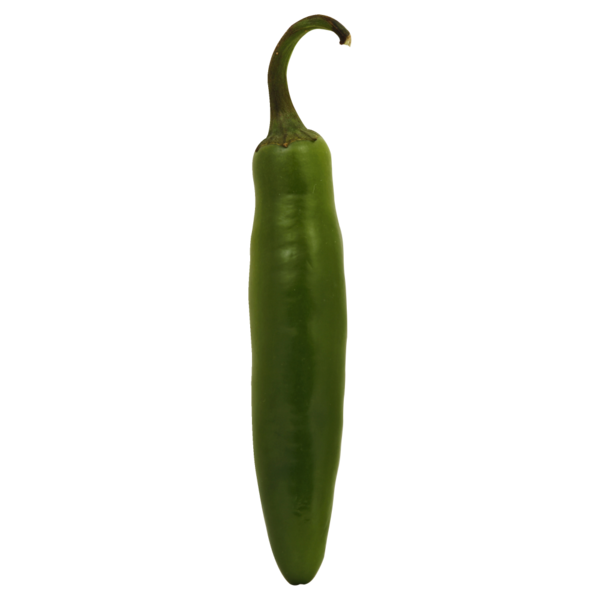CONDIMENTS AND SAUCES
MAIN DISHES
SIDE DISHES
Serrano Pepper
Serrano pepper, also known as Capsicum annuum, is a medium-sized chili pepper native to the mountainous regions of Mexico. They are well-known for their bright, bold flavor and moderate heat level, making them popular amongst home cooks and consumers for spicing up a variety of dishes. Serrano peppers are typically green, turning red or yellow as they mature.
When preparing or consuming serranos, the seeds and membranes can be removed to reduce heat; however, their crispy texture and piquant taste provide a fresh dimension to salsas, sauces, salads, and stir-fries. These peppers are also commonly pickled or used as a finishing touch in Mexican-inspired dishes.
75%
CARBS
5%
FAT
20%
PROTEIN
257 Serrano Pepper Products
Used In 77 Recipes
Serrano Pepper Is Frequently Used With
Serrano Pepper FAQ
Cooking with serrano peppers can be quite rewarding for those who enjoy a little heat. These chiles provide a medium-hot kick that is more intense than a jalapeno, but not as firey as a habanero. Often, people struggle with gauging the heat level. Without sampling, it's tough to ascertain how much heat a serrano pepper will bring as heat levels can fluctuate based on growing conditions and maturity. It's key to remember that the seeds and membranes contain most of the heat. Removing these parts will yield a milder flavor. Always handle peppers with care and avoid touching sensitive areas after handling. Serrano peppers are extremely versatile and can be used in more ways than just a hot salsa. Dry roasting, stuffing, or using them in pickled form can showcase their unique flavor profile. Another little-known tip is to pair serrano peppers with sweet elements, such as fruits or honey, to create a unique contrast of flavors.
Why do serrano peppers turn red?
How do you prepare serrano peppers?
Can you grow serrano peppers at home?
Are serrano peppers hotter than jalapenos?
How do you reduce the heat of a serrano pepper?
Can I substitute serrano peppers for jalapenos?
Are serrano peppers good for you?
What's the difference between green and red serrano peppers?
What can I make with serrano peppers?
Why are my serrano peppers not hot?
Expiration & Storage Tips
When does serrano pepper expire?
Serrano peppers remain fresh for about 1 week in the pantry, but refrigeration can extend their shelf life to about 2-3 weeks. Peppers stored in the freezer can last up to a year. Once a serrano pepper has been cut open, it’s best to use it within 2-3 days. If you've blended serrano peppers into a sauce, this homemade condiment can last for about 5-7 days in the fridge.
How do you tell if serrano pepper is bad?
It's pretty easy to tell if a serrano pepper has gone bad. Look for wrinkling, a softening texture, or dark spots - these are signs the pepper has started to spoil. If mold or a bad smell is observed, discard it immediately. If the pepper's bright colors have faded, this doesn't necessarily mean it's bad, but it’s likely stale and won't taste as fresh.
Tips for storing serrano pepper to extend shelf life
• Store serrano peppers in the refrigerator in a crisper drawer or a plastic bag with some holes poked in it to allow for air circulation.
• Whole serrano peppers can be frozen straight away, but if you prefer, you can slice or dice them before freezing in a freezer-safe bag. Doing so can help maintain the texture better.
• If you have a large batch, consider preserving them by pickling or drying. Pickled serrano peppers provide a spicy bite to many dishes and can last several months in the fridge. Dried serranos can be ground into a powder to use as a spice.
• Rinse your peppers just before use to avoid extra moisture, which can accelerate decay.
EXPIRES WITHIN
11 - 21
DAYS
Substitutes

Jalapeno Pepper

Poblano Pepper

Sliced Peppers

Hatch Green Chile
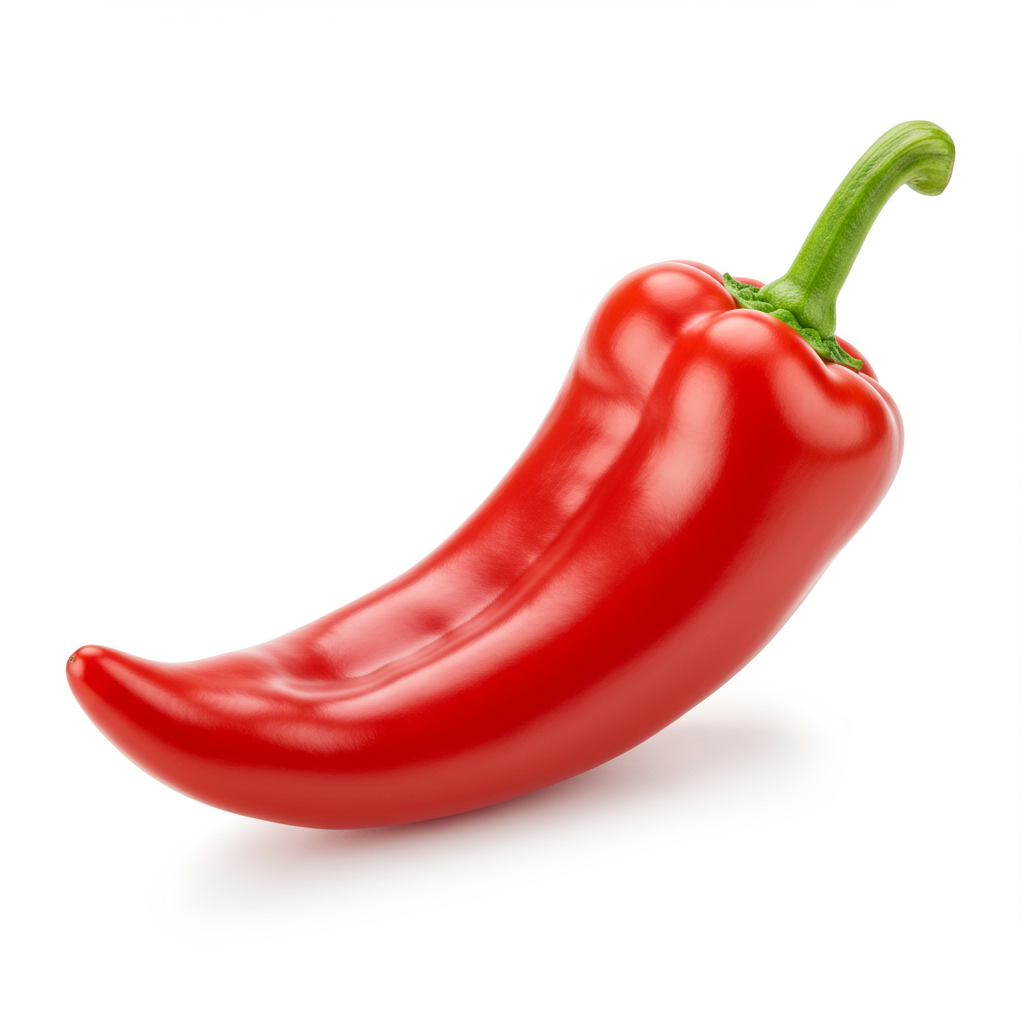
Italian Sweet Pepper
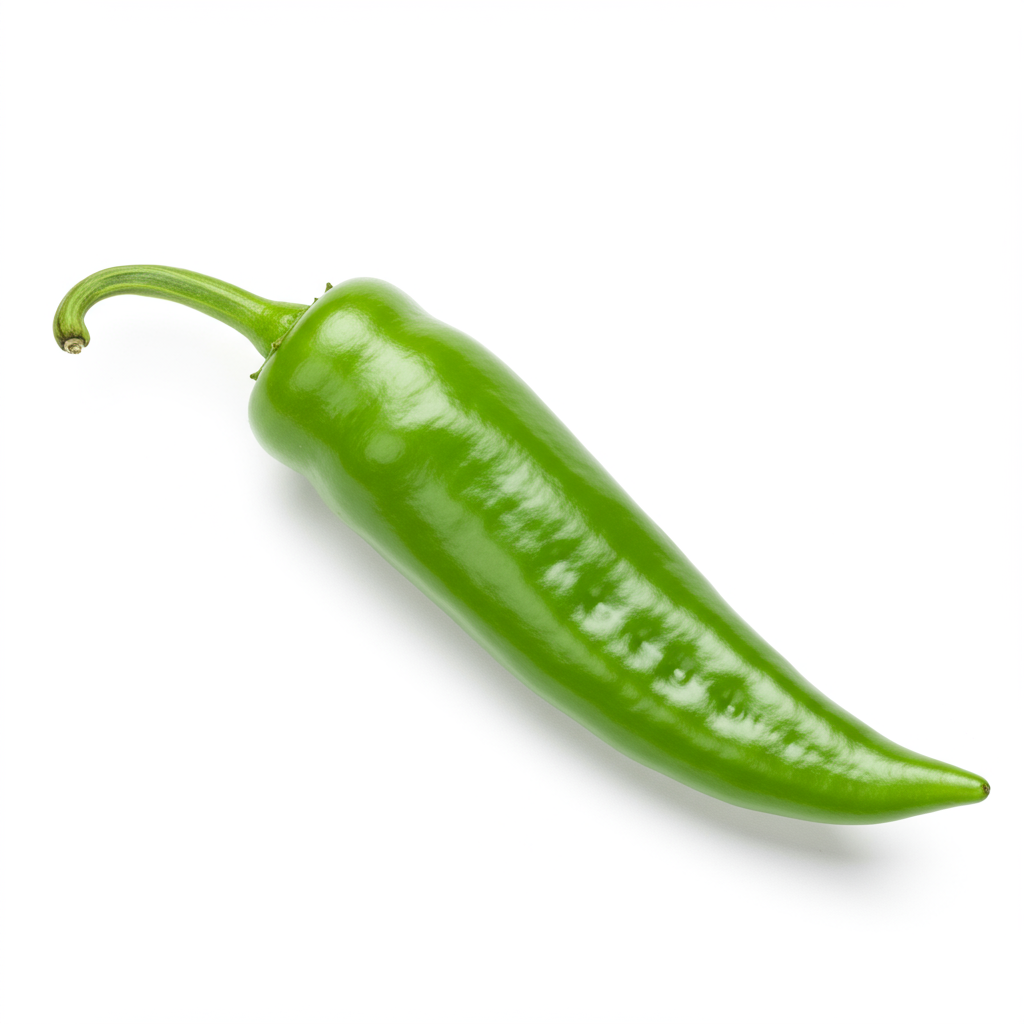
Long Hot Pepper

Padron Pepper

Green Chile

Diced Green Chile

Fresno Chile
See All
Health Info
Macros
1g
CARBS
0g
FAT
0g
PROTEIN
Allowed on these diets
LOW FAT
HIGH CALCIUM
VEGETARIAN
KETO
PALEO
WHOLE 30
MEDITERRANEAN
LOW CARB
VEGAN
LACTOSE FREE
GLUTEN FREE

